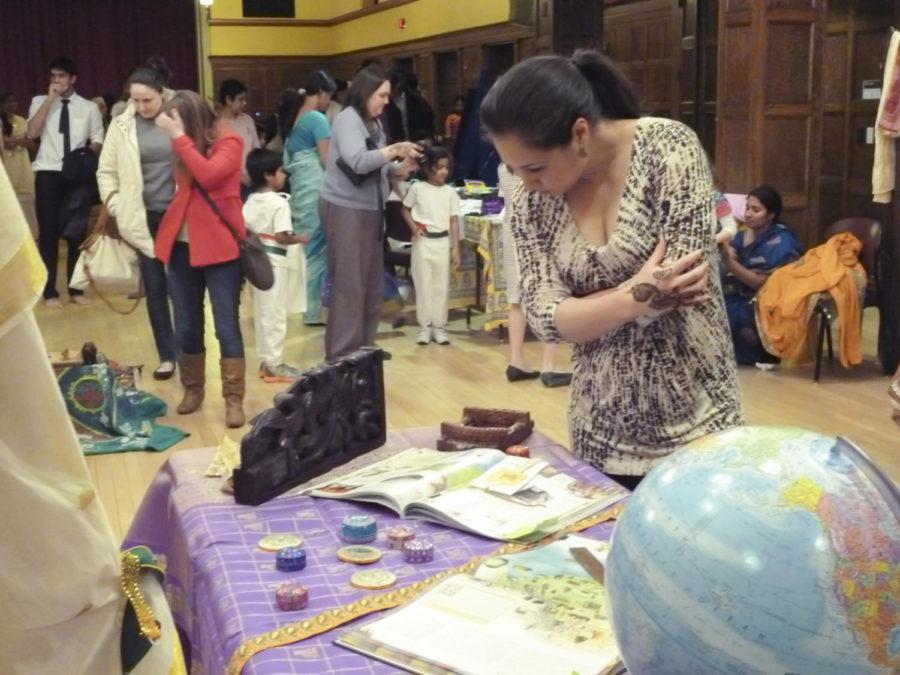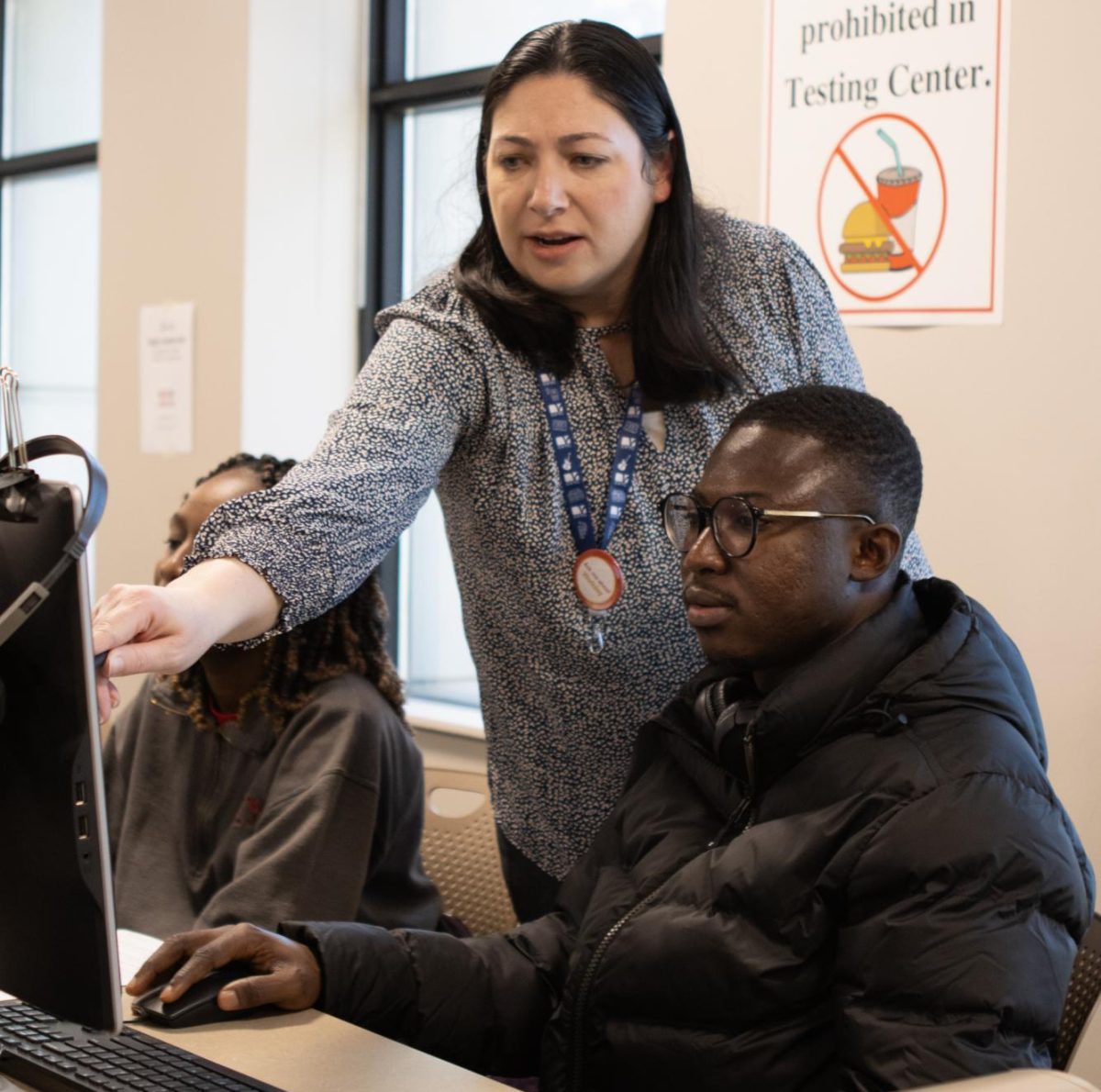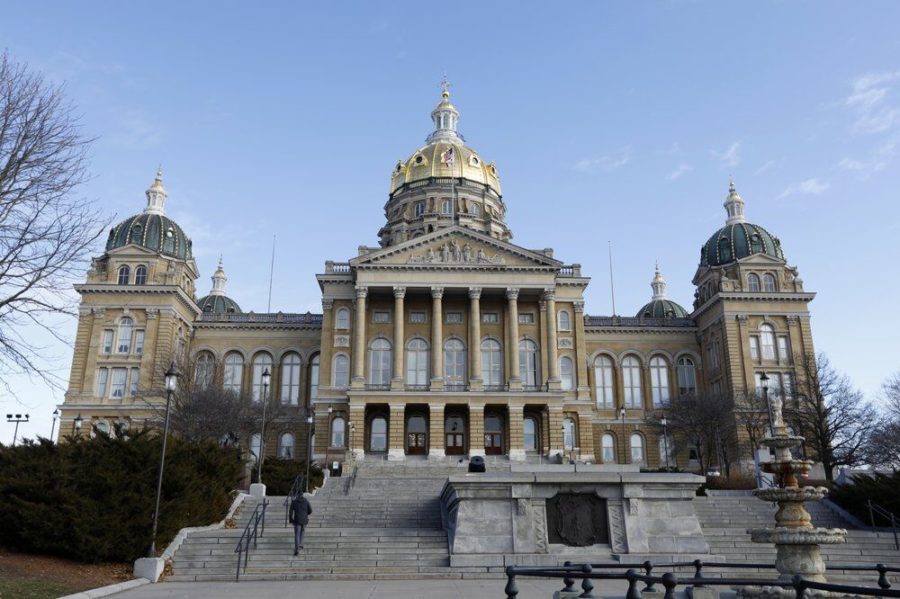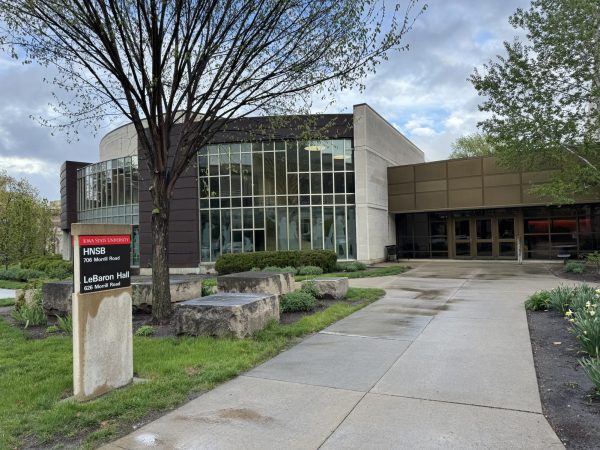Students experience Indian Culture at Rangoli event
Photo: Lissandra Villa/Iowa State Daily
Marli Mesa looks at display of Indian artifacts during Rangoli on Feb. 17 at the Great Hall. Rangoli had various booths and displays showing the culture and heritage of India.
February 18, 2013
The Great Hall of the Memorial Union was transformed into an Indian village fair over the weekend for the Rangoli: Colors of India event.
The event, co-hosted by Iowa State’s Indian Students Association and the India Cultural Association of Central Iowa, hosted students from 1 to 5 p.m. in the Memorial Union.
“Our mission is basically just to let people know about diversity and cultures outside of the U.S.,” said Rohit Zambre, junior in electrical engineering and president of the Indian Students Association.
Zambre said an event like this fair, or “mela” as it is called in India, is important to “bring everyone together.”
Gauri Ramasubramanian, graduate student in material science and engineering and former member of the Indian Students Association, said that one of the reasons for the event is to unite Indian students.
“[The fair demonstrated that] they can make a home away from home,” Ramasubramanian said.
The fair attracted many local Indian students, along with Ames residents who were curious about Indian culture. Students were able to visit the various booths set up in the Great Hall and watch the musical and dance performances.
“Generally people [in the Indian culture] are very social,” Ramasubramanian said. “[The fair] is a family thing.”
Raghul Ethiraj, freshman in aerospace engineering and public relations officer of Indian Students Association, said that one reason for the event is to show the very diverse cultures in India.
“It’s really nice to bring a variety of cultures that even I’m not aware of into one room,” Ethiraj said.
Sequined saris, a cloth traditionally worn draped around the shoulders of a woman, outlined the room. Booths advertised ornate, wood-carved jewelry boxes, plates, and various jeweled containers.
“[Rangoli shows] how different [Indian culture] is in every state,” Ethiraj said.
Women were able to try on traditional fabrics twisted into a specific style of dress worn in India.
Traditional folk music instruments were on display, some of which were used during musical performances on stage that afternoon. Designed jewelry from the different regions of India was displayed for spectators to view.
“There is not only one culture that is prevalent throughout the country,” Zambre said.
Free henna tattoos were offered. According to HennaArts.com, the tattoo is made from crushed dried leaves and hot water and will last seven to 14 days when applied to skin.
Throughout the festival, popular songs and dances were performed. The “Garba,” an Indian folk dance, was performed by Des Moines area volunteers and members of the India Cultural Association.
With the display of different cultural aspects at the fair, Ramasubramanian explained that “somehow there is a connection between all of [the different aspects].”

















